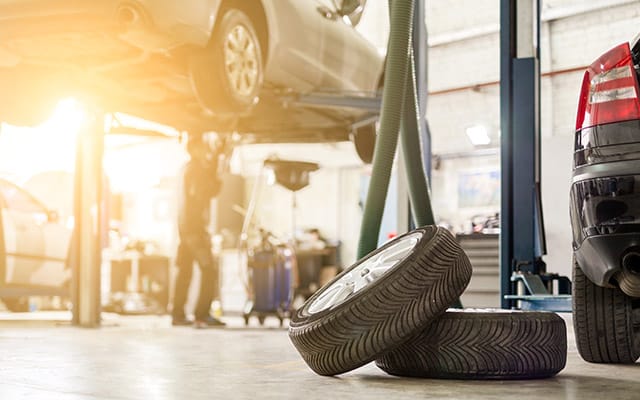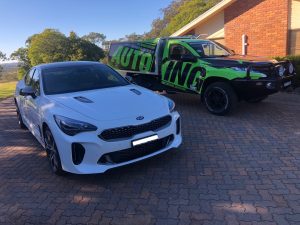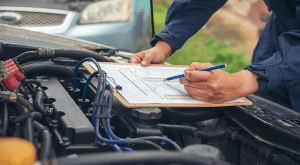Staying on top of your car’s maintenance can prolong the life of your vehicle. It can also save you money by avoiding costly repairs and keeping you and your family safe on the road. You don’t have to be an auto mechanic to keep your car well-maintained; all you need is a checklist and the discipline to stay on top of it.
But how can you possibly know how often you should do it?
Car manufacturers provide a set of instructions, based on a specific car model, in a book called the owner’s manual. You can inspect the owner’s manual as it has the service schedule for your car, as well as all the service tasks required to be carried out. However, if you don’t have access to the manual you can follow the following standard frequencies of services.
Regular check-ups
There are some tasks you have to perform regularly – depending on how long your car is on the move. These tasks require little to no effort, but failing to perform them may result in an inefficient and below-par performance. These checkups include –
- Fog lights, turn signals, brake, and parking lights – It’s relatively easy to notice a headlight that isn’t working. Others aren’t as obvious, so walk around the car monthly to visually inspect the lights.
- Oil and coolant levels – Check levels when the engine is cool at least once a month and always top off the levels before making a long trip.
- Tire pressure and tread depth – Tires are essential to safe driving. Regularly inspect your tires and the spare for uneven wear, proper air pressure, and adequate tread depth. Use a penny to check the tread depth. If the top of Lincoln’s head is covered, there is still more than 2/32” of depth remaining, meaning there is still adequate tread left.
- Windshield wiper fluid – Be sure the reservoir has an adequate supply of wiper fluid. It’s not possible to drive safely with an obstructed view, something that can result from a dirty windshield.
3-Month Check-up
- Oil and filters – Engines that use conventional motor oil can be on a 3-month/3,000-mile interval. Those using synthetic varieties might have up to 10,000 miles between oil changes.
- Battery and cables – Make sure the battery and cables have tight connections and have no corrosion or leaking fluid.
- Belts and hoses – The serpentine belt and other belts in the engine compartment shouldn’t look glazed, cracked, or frayed. Hoses shouldn’t leak or have cracks or bulges.
- Power steering fluid – Check the power steering fluid level when the engine is warm and add more when needed.
- Wiper blades – Driving with worn wiper blades is a safety hazard because of reduced visibility when it rains. Inspect the blades seasonally and replace them if they’re damaged or no longer clear the windshield.
6-Month Check-up
- Rotate tires – Rotating tires helps extend their life by balancing the tread wear and can help prevent noise and vibration problems. Check the owner’s manual beforehand because some types of tires and wheels shouldn’t be rotated or have to be rotated in a very specific way.
- Wax vehicle – Wash your car regularly and apply a wax coating at least twice a year to help protect your car’s finish from rust.
- Exhaust system – Look for and repair any damage, especially if the muffler is making noise.
- Battery performance check – Your car won’t start without a good battery. Beginning when the battery is 3 years old, test it twice a year at your auto parts store.
- Chassis lubrication – Your owner’s manual will say if the chassis, steering, and suspension systems require periodic lubrication.
12-Month Check-up
- Air filters – Cabin air filters help clean the air inside the car and should be replaced annually. However, engine air filters keep debris out of your engine and should be inspected when the oil is changed.
- Brakes – Inspect the brake system, including the brake fluid, brake linings, rotors, and brake pads, to help ensure the proper operation of these critical components. The lifespan for brake pads largely depends on the driving style of the operator.
- Inspect shocks and struts – Take your car to the shop if you notice a decrease in smoothness when driving. Shocks and struts are an essential part of the car’s steering system and should be inspected by a professional.
- Coolant/antifreeze – Replace every year. Flush the coolant and the entire cooling system after 60,000 miles.
Service Immediately
- Check engine light – This warning appears when the car’s control system discovers a problem. There is no reason to panic when you see this yellow warning light, but don’t delay a visit to the repair shop, and don’t reset it on your own without knowing why it came on in the first place. A mechanic can run diagnostic tests to determine the cause.
- Headlights/taillights – Check for blown fuses if a light goes out. Replace the light if that isn’t the problem. Driving with burned-out lights is unsafe and can bring you a traffic ticket.
- Tire pressure light – A car’s tire-pressure monitoring system will alert you when the air pressure in a tire drops below a certain amount. Low air pressure can bring unsafe driving conditions, so inflate your tires to proper levels as soon as you can.
Keeping up with this schedule ensures that your car runs smoothly and you have a safe drive. Regular car maintenance also helps to reduce wear on important components of your car, prolonging its lifespan.





